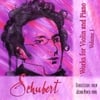I was involved in a wonderfully inventive program of music this morning up in Dayton at the first of the Philharmonic's Demirjian Chamber Explorations Series:
Charles Ives, The Unanswered Perennial Question
Charles Ives, Central Park in the Dark in the Good Old Summertime
George Walker, Lyric for Strings
Peter Schickele, Concerto for Chamber Orchestra
You'd be correct if you thought this looks like a program dedicated to the music of American composers. Unfortunately for me, I was only involved in one of these works: Central Park in the Dark. (The rest had no keyboard parts.) But Central Park makes up for this by having no less than THREE keyboard parts! Two other pianists (Evan Mack and Philip Amalong) played the second part, which is intended for four-hands on another piano.
Both Ives pieces (Ives picture at right) were written in 1906 and pursue a rather unusual experiment: the orchestra is split into two parts (strings in one, all the other instruments in the other) which are then directed separately by two conductors. What was innovative about today’s performance was the idea of moving the string section behind the stage shell (unseen by the audience) and keeping the rest of the orchestra in front of the shell (exposed to the audience). This achieved a heightening of the distant and slightly hazy character desired in the string parts for both of these pieces. I’m not sure how often this kind of split-staging technique is used for these two pieces, or if it’s even been done before, but it did prove to make the experience more dramatic and effective.
You can read about The Unanswered Question here, but I’ll describe our performance of Central Park briefly. The strings (which were offstage) begin the piece playing somewhat undefined and dissonant harmonies softly, perhaps representing the laid-back ambiance of a warm summer night in Central Park in New York (remember to keep in mind it’s 1906!) The stage lights slowly rise up from total darkness, and the onstage instruments gradually infringe on the dense texture of the strings. All sorts of tunes and melodies that one might have heard coming from turn-of-the-century New York City neighborhood pubs, apartments, and street music groups chaotically interact with one another and increase in density and intensity. My part was really fun: I jump-start the chaos that soon engulfs the audience by playing the well-known tune Hello! Ma Baby! in ragtime style. The other instruments gradually pick up the tune, overlapping at different times, and the tempo gets faster until everything comes unglued in a frantic climax. The onstage instruments fall silent after this hullabaloo, and we are left with only the strings playing their humid chorale and quietly fading in the late summer night. The lights come down slowly during the final strains and fade back into complete blackness…
It was really quite a fun (and crazy!) thing to do. I think the audience possibly got a better sense of what the eccentric Ives was trying to communicate through the added theatricality of lighting effects and the physical separation of the two orchestra groups.
The Lyric was just a gorgeous offering from this great contemporary Pulitzer-Prize winning composer (audio sample), and the Schickele provided an upbeat and light-hearted ending to a rather challenging program. Never heard of Peter Schickele? You might know him by his alter ego.
Photo of Charles Ives by Eugene Smith, Charles Ives Society website.
Thursday, October 4, 2007
Hello! Ma Baby! in Central Park
Subscribe to:
Post Comments (Atom)








0 comments:
Post a Comment